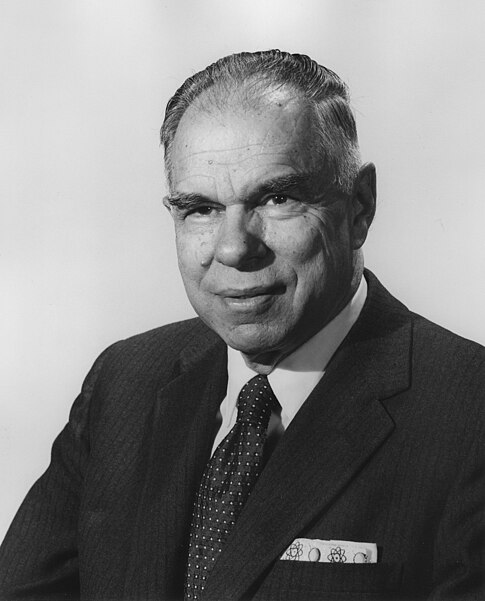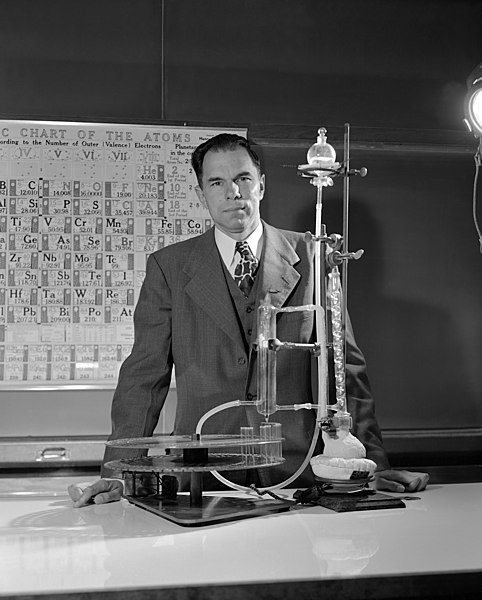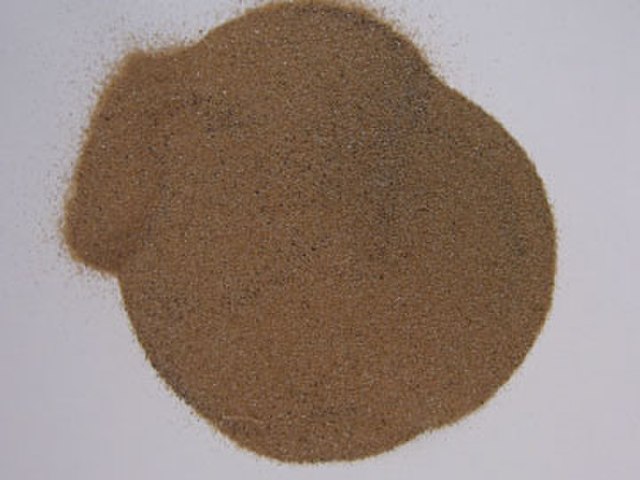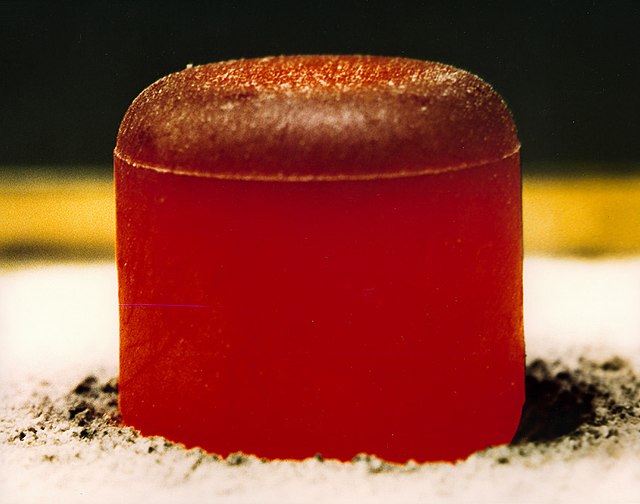Glenn Theodore Seaborg was an American chemist whose involvement in the synthesis, discovery and investigation of ten transuranium elements earned him a share of the 1951 Nobel Prize in Chemistry. His work in this area also led to his development of the actinide concept and the arrangement of the actinide series in the periodic table of the elements.
Seaborg in 1964
Seaborg in 1950, with the ion exchanger elution column of actinide elements
Seaborg (second from left) during Operation Plumbbob
From left to right: Chairman Seaborg, President Kennedy, Secretary McNamara on March 23, 1962. By this point, McNamara and Seaborg had been discussing the AEC's studies on the ecological effects of nuclear war and "clean" weapon alternatives. (Courtesy: National Security Archive, Original: National Archives)
The actinide or actinoid series encompasses at least the 14 metallic chemical elements in the 5f series, with atomic numbers from 89 to 102, actinium through nobelium. The actinide series derives its name from the first element in the series, actinium. The informal chemical symbol An is used in general discussions of actinide chemistry to refer to any actinide.
Enrico Fermi suggested the existence of transuranium elements in 1934.
Glenn T. Seaborg and his group at the University of California at Berkeley synthesized Pu, Am, Cm, Bk, Cf, Es, Fm, Md, No and element 106, which was later named seaborgium in his honor while he was still living. They also synthesized more than a hundred actinide isotopes.
Monazite: a major thorium mineral
A pellet of 238PuO2 to be used in a radioisotope thermoelectric generator for either the Cassini or Galileo mission. The pellet produces 62 watts of heat and glows because of the heat generated by the radioactive decay (primarily α). Photo is taken after insulating the pellet under a graphite blanket for minutes and removing the blanket.







